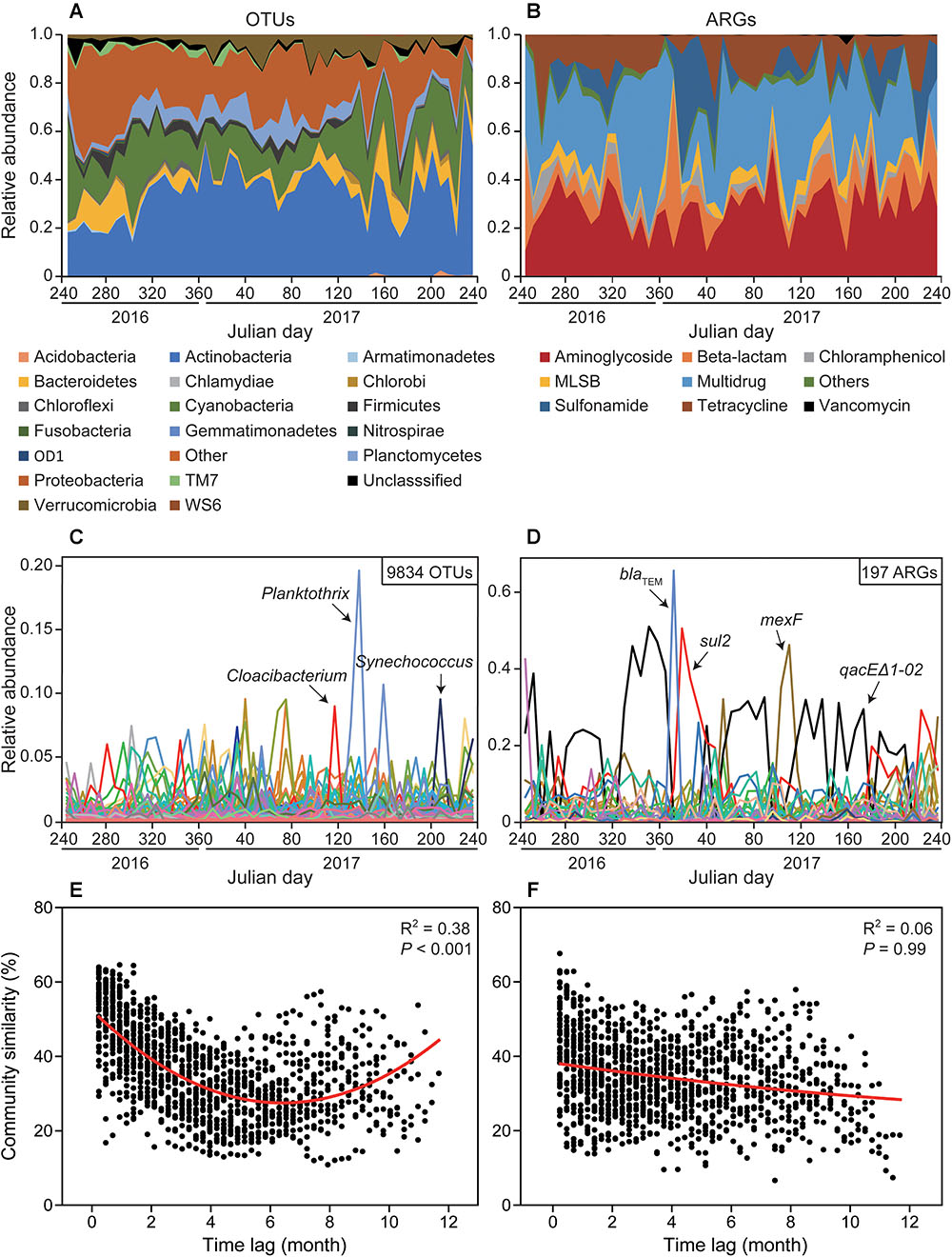Antibiotics were regarded as panacea for any microbial infections since discovered. However, with the emerging problem of antibiotic resistance, antibiotic resistant bacteria (ARB) and antibiotic resistance genes (ARGs) have been identified as emerging contaminants, posing a serious threat to the health of humans and the environment. Antibiotic resistance is ancient in environment, but with the continuous increase in discharge of antibiotics, heavy metal and pesticide, the development, spread and enrichment of ARGs has accelerated globally. Aquatic environments are considered to be significant reservoirs of both ARB and ARGs, providing ideal settings for the occurrence and dissemination of ARGs. Previous studies reported that bacterial community composition closely correlates with ARG profiles and controls the transfer of ARGs in antibiotic-rich environments including municipal and aquaculture wastewaters, but the contribution of microbial community shifts to antibiotic resistance function variations in natural waterbodies with low and medium antibiotic concentrations remains largely unknown. Additionally, research on the dynamics of ARGs and their relationship to microbial taxonomic community and environmental factors based on high-frequency time series is still lacking.
The research group led by Prof. Jun Yang established high-frequency observation station of urban reservoir, and investigated the dynamics of bacterial OTUs and ARGs in Xinglinwan reservoir using high-throughput approaches. In total, 197 ARGs and 10 mobile genetic elements (MGEs) were detected. The relative abundance of bacterial OTUs and ARG subtypes exhibited distinct variations across the year at weekly intervals. However, on a one-year scale, the results showed that the bacterial community had a seasonal pattern, while ARGs composition did not exhibit seasonality, thereby indicating the asynchrony or decoupling of temporal patterns of microbial taxonomy and function. According to this study, bacterial taxonomic and ARG profiles showed significantly weak correlation, but the temporal patterns of bacterial taxonomic communities and ARG profiles were asynchronous. More importantly, bacterial abundance and community diversity were more strongly correlated with 17 measured environmental variables than ARG and stochastic processes appeared to have a more important role in the structuring of bacterial taxonomic communities. Further, both precipitation and turbidity were significantly correlated with the richness and diversity of ARGs, and MGEs showed significant positive correlations with ARGs. Our results improve the understanding of drive processes and mechanisms of ARGs at fine temporal scale, and offer empirical data of use in the monitoring, assessment and management of the urban water environments.
The research entitled “Decoupling the dynamics of bacterial taxonomy and antibiotic resistance function in a subtropical urban reservoir as revealed by high-frequency sampling” was published in an international journal of microbiology. Frontiers in Microbiology, 2019, 10: 1448. This work was funded by the Strategic Priority Research Program of the Chinese Academy of Sciences, the National Natural Science Foundation of China, and the Xiamen Municipal Bureau of Science and Technology.

Contrasting dynamics of bacterioplankton OTUs and antibiotic resistance genes (ARGs) from September 2016 to August 2017 in Xinglinwan Reservoir. Although relative abundances of bacteria at phylum level (A) and ARG at type level (B) appeared to be relatively stable, the relative abundances of bacterioplankton OTUs (C) and ARG subtypes (D) varied extensively and rapidly. Time-lag regression analysis showing temporal dynamics of bacterial community (E) and ARG profiles (F). The red lines represent non-linear regression model fit to month lag versus Bray-Curtis similarity (%), and only bacterial community results in a good fit of a sinusoidal curve, indicating only bacterial community has the evidence of seasonality.